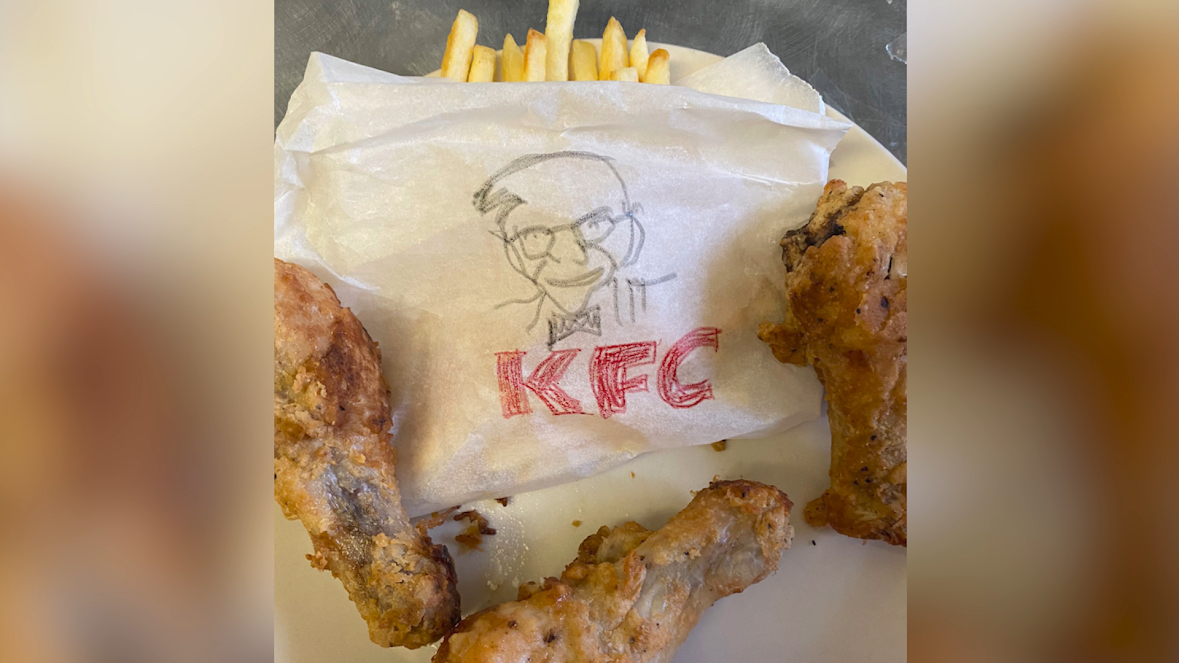As the lockdown eases, KFC steps up advertising and shifts messaging

KFC is back on TV across the U.K. and Ireland this week after it pulled ads last month while all its restaurants were temporarily closed. More ads are being bought across more channels now, however, as more than half of its 960 restaurants are set to be opened by the end of the week.
KFC has borrowed imagery from its fans’ fairly mixed attempts to cook their own version of the fried chicken while its restaurants were closed. A small number of fans started sharing their attempts in the days after the closures before KFC co-opted it using the #RateMyKFC hashtag. The advertiser’s agency Mother then used the most conspicuous creations in a TV ad where the advertiser thanks fans but explains they can stop now that its restaurants are delivering to people’s homes via services like Just Eat, Deliveroo and Uber Eats.

“For us, advertising remains a crucial part of the overall communications strategy and so we’ll be looking at the back end of the year for when we get back those originally planned levels,” said Jack Hinchliffe, marketing director at KFC UK and Ireland.
Despite this stance, Hinchliffe isn’t committing to any long-term media plans just yet. Indeed, 90 days is the new long term for many advertisers. Half of them have cut their planning horizons in half, and are only committing to media less than three months out, according to an Advertiser Perceptions study of 151 marketers.
The decision to focus on delivery was a “big shift” in messaging for KFC, said Hinchliffe.
Restaurants across the globe have pivoted to a delivery model as nationwide lockdowns have kept diners at home. Those orders have softened the impact of the lockdowns for KFC in the U.K.and Ireland where sales have accelerated in recent weeks, said Hinchliffe. Sales at stores open for more than a year fell 8% at KFC in the first quarter ended 31. March.
“We’ve seen for some time that delivery has been growing for us as our customers look for more convenient and easier ways to access food and it’s been a key growth channel for us over the last year, said Hinchliffe.”
KFC’s ad is emblematic of two big challenges advertisers are trying to nail as lockdowns ease: the first is messaging and how they show empathy in a way that can’t be construed as profiteering during a crisis: the second challenge comes down to producing ads at a time when people still need to enforce social distancing.
“Even when total lifting happens, behaviors and attitudes may be changed for good,” said Leila Fataar, founder of cultural marcomms company Platform 13. “Life inside the new guidelines means evolving spaces for brands to be both useful and enjoyable — all need to be taken into consideration in the coming months.
It’s an opportune time for advertisers like KFC to increase their spending. The cost of advertising has dropped across media, from TV to digital where there are fewer advertisers to drive up competition. TV ad costs have plummeted by as much as 50% in the U.K., according to the Advertising Association’s Warc Expenditure Report.
More in Media

From sidelines to spotlight: Esports events are putting creators center stage
Esports events’ embrace of content creators reflects advertisers’ changing priorities across both gaming and the wider culture. In the past, marketers viewed esports as one of the best ways to reach gamers. In 2025, brands are instead prioritizing creators in their outreach to audiences across demographics and interest areas, including gaming.

Condé Nast and Hearst strike Amazon AI licensing deals for Rufus
Condé Nast and Hearst have joined the New York Times in signing a licensing deal with Amazon for its AI-powered shopping assistant Rufus.

Media Briefing: AI payouts may be entering a new era
AI compensation is evolving — and new models, not just publisher demands, are driving the shift beyond flat-fee licensing.








